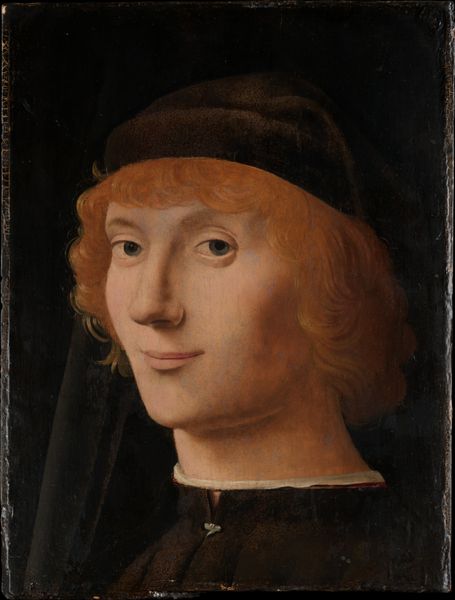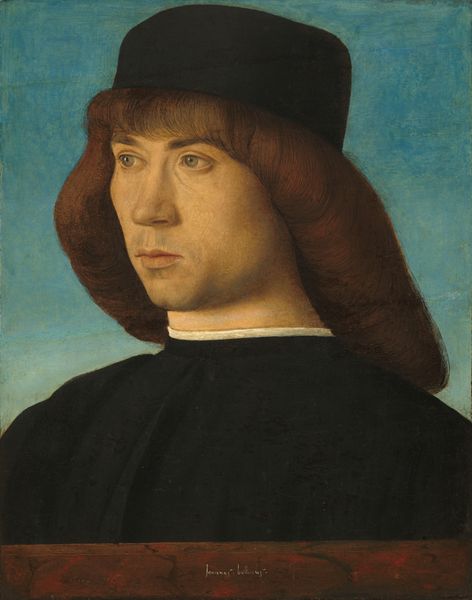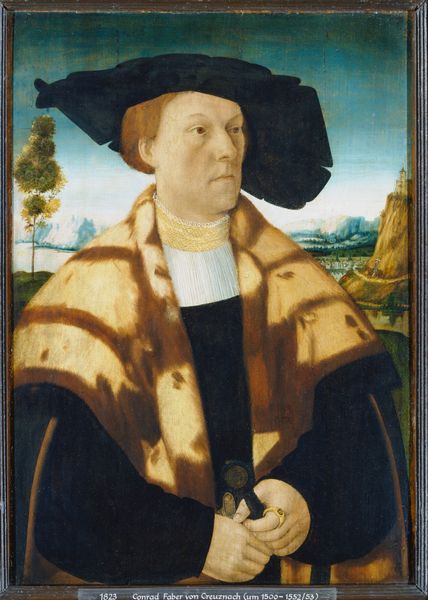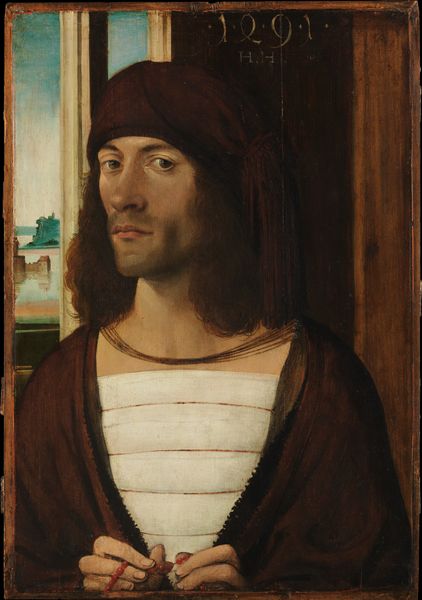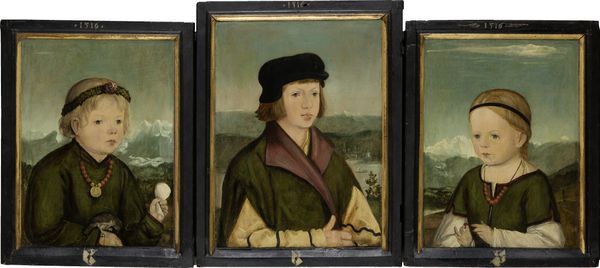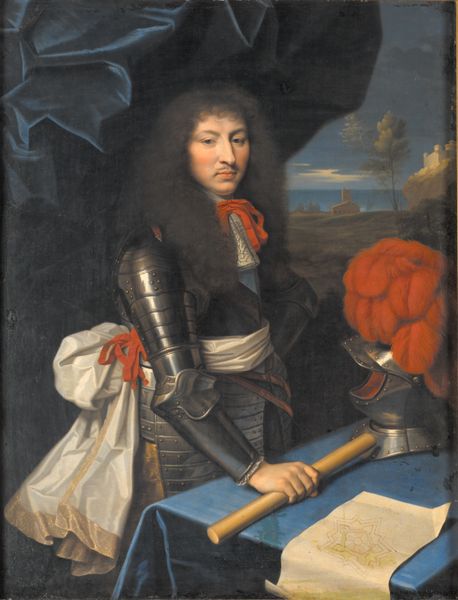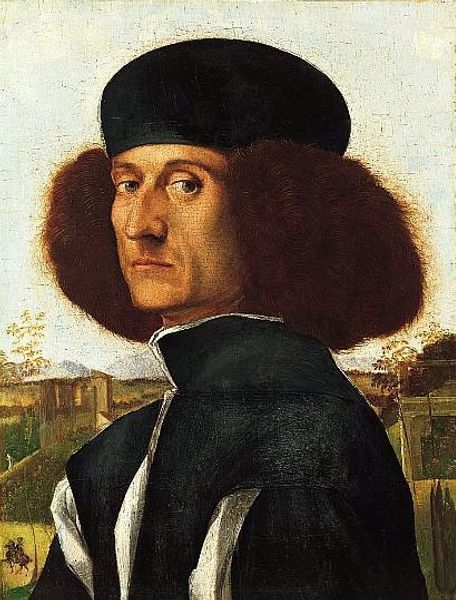
oil-paint
#
portrait
#
oil-paint
#
11_renaissance
#
oil painting
#
italian-renaissance
Dimensions: overall: 76.8 × 58.4 cm (30 1/4 × 23 in.) framed: 106.68 × 89.54 × 7.62 cm (42 × 35 1/4 × 3 in.)
Copyright: National Gallery of Art: CC0 1.0
Curator: Welcome. We're standing before "Portrait of a Gentleman," an oil painting dating to around 1520, attributed to Bartolomeo Veneto. Editor: He strikes me as someone burdened, almost melancholic. Is it the somber tones, perhaps the closed-off composition that evokes this feeling of constrained power? Curator: Note how Veneto strategically juxtaposes contrasting textures. The soft, yielding fur against the structured geometric patterns lining his sleeves creates a tension – order versus chaos, perhaps reflective of the sitter's internal state. Editor: The details speak volumes. The placement of his ring and its golden hue suggest prosperity, yet its placement in a tightly clasped hand seems symbolic of wealth cautiously possessed or hoarded. I see signs of restraint in everything: even in the meticulously rendered, but dark hair, and controlled landscape scene just beyond. Curator: Precisely! The landscape in the window, though bright, is secondary to the figure. It's framed – controlled. The figure is positioned adjacent to this outside view which introduces dynamism and life, elements counterbalanced, or perhaps constrained, by the heavy drapery. The figure emerges with a rigid sense of volume in the dark tones. Editor: But the drapery itself feels deliberately opulent in colour— almost stage-like! Is Veneto intentionally referencing theatricality and performance here? Is the portrait conveying constructed persona as opposed to an inherent nature? Curator: Indeed, the symbolic implications of color and texture invite multiple interpretations. The artist crafts a carefully constructed visual statement that extends beyond simple likeness. Each formal component reinforces aspects of social status or reveals inner turmoil. Editor: Considering the historical moment, Veneto perhaps presents a commentary on early 16th century courtly life where a show of wealth and controlled emotion may very well define a successful man. Curator: Ultimately, Bartolomeo Veneto invites us to engage actively with form, prompting considerations of status, agency, and psychological insight through purely pictorial means. Editor: I agree. Through astute visual analysis, Veneto’s portrait serves as a potent gateway into a historical world brimming with intricate semiotic interplay and visual dialogue.
Comments
No comments
Be the first to comment and join the conversation on the ultimate creative platform.

